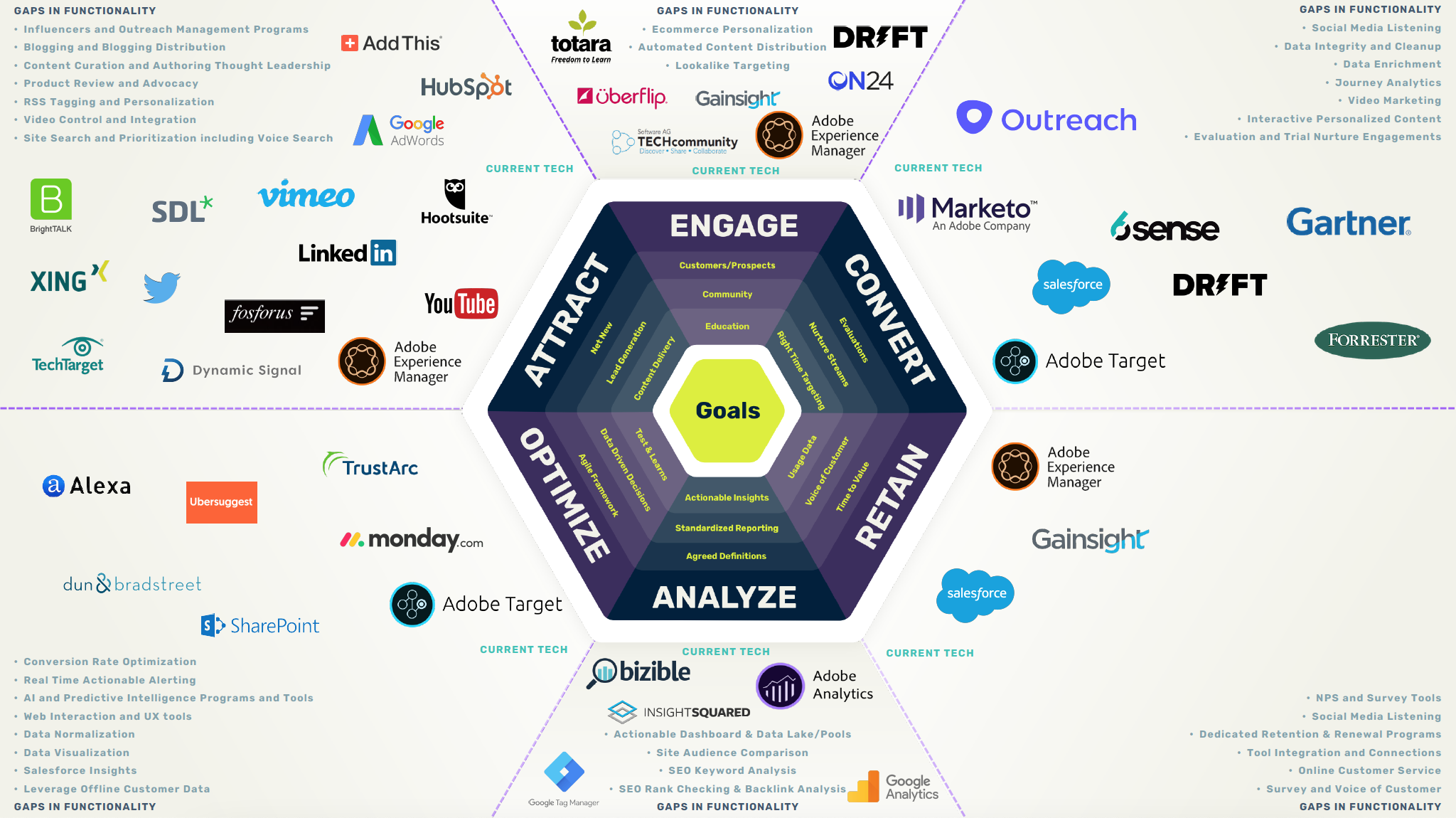Building the machine
Martech Stack Documentation
February 15, 2023

Documenting your Martech stack
What’s your standardized Martech stack? Do you know what’s running? Do you know the overlaps and are you willing to accept them?
The purpose of documenting the stack is to consolidate for continuity and control. Some of the vendors you work with may collect PII (Personal Identifiable Information) or PD (Personal Data) on your behalf or may not integrate into your databases of record for subscription management. All Marketing technology used must meet your predefined GDPR and CCPA requirements. Your role is to understand what they do – you should not standardize on software that does not automatically integrate or is not compliant to your rules. I’ve tried to keep the tech stack to 6 journey categories listed in the image above:
- Attraction – Unknown, Dark, Net New
- Engagement – Customers & prospects, Community, Education
- Conversion – Right time targeting, Free trial & evaluations
- Optimization – Testing, Learnings, Modeling, Program Management
- Analysis – Data driven decision making, Standardized reporting
- Retention – NPS, Customer Satisfaction, Expansion, Churn
Stack diagrams are great pictures to look at but there needs to be a detail document behind it where you’ll have links to their privacy policies as well as their function for your organization.
After the descritoption I typically list an opinion in a table for quick reference. This way at a glance if you are in legal or IT you’ll quickly communicate why you are using the product.
| Category | Objective | Vendor | Rating | Cost |
|---|---|---|---|---|
| Conversion | Site audience comparison | Alexa | ★★★★☆ | ★☆☆☆☆ |
The Standardized Rules:
- Integration – our tools must work well together and integrate with existing technology.
- Centralized data – tools cannot duplicate data or use different data sources for their operations.
- Multi-channel – We have a requirement to engage with prospects across multiple platforms with a series of interactions that are fully integrated together.
- Insight – Data-driven insights though data analytics provided from our Martech stack is a requirement. Additionally, we need agreement on what KPIs to measure – see centralized data.
- Flexible – Todays marketing strategy might be different in a couple of years. We’ll need to bear in mind the future in mind and consider how we can adapt and scale quickly.
- Real-time – Optimal if we can count on real-time data updates.
- Compliant – Any tools that you integrate must match your organizations defiinition of compliant for any regulatory questions.
Im not an attorney
PII might be PD, but not all PD is PII - confused yet? This is a perfect use for counsel. Introduce the legal teams and let them talk. I’ve had instances with products that are global in scope that didn’t meet our requirements for protections on PD our attorneys couldn’t live with.
The GDPR definition of PD covers a broad scope of information. Twitter, LinkedIn, Facebook posts, Maps Data, and other components of your digital footprint may be included as well as past addresses, medical records, financial transactions etc.
PII however is narrower in its scope toward footprint items like your name, address, birth date, Social Security number, financial information etc.
It’s difficult even typing that out but there is some good news. There are so many companies in the MarTech space and you’ll have an alternative in short order that will meet the rules.